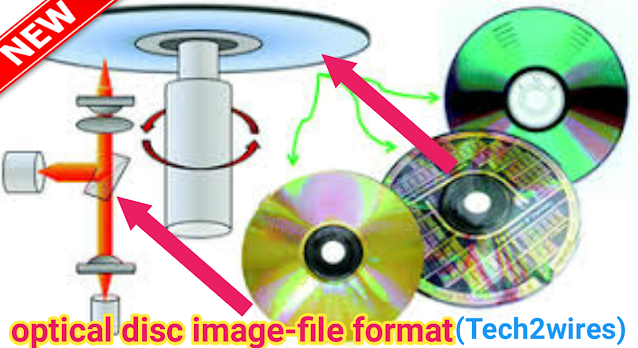optical disk image-file format | Technology used in optical disk image
An memory device is AN electronic information data-storage medium which will be written to and browse from employing a weak irradiation.
optical disc image-file format
An memory device is AN electronic information data-storage medium which will be written to and browse from employing a low-powered laser beam.
Originally developed within the late Nineteen Sixties, the primary memory device, created by James T. Russell, hold on information as micron-wide dots of sunshine and dark. Russell's optical storage system used a strong backlight to scan the dots through a clear sheet of fabric on that the dots were encoded.
In later memory device systems, a optical maser scan the dots and therefore the information was born-again to AN electrical signal. Then the information was born-again to audio or visual output. However, the technology did not seem within the marketplace till Philips and Sony came out with the recording (CD) in 1982. Since then, there has been a relentless succession of memory device formats, initial in CD formats and followed by variety of digital versatile disc (DVD) formats.
Initially, AN memory device might hold way more information than equally sized magnetic storage medium media. will increase in disc drive (HDD) technology, and significantly the introduction of solid-state memory, helped magnetic media capability outgrow optical discs. However, memory device storage is a smaller amount seemingly to degrade over time than magnetic storage medium, like HDD or memory device, thus it's typically used for depository or cold storage.
Storage capability has raised with every new generation of optical media. the most recent standards, such as Blu-ray, offer to twenty seven gigabytes (GB) of storage on a single-sided, 12-centimeter disc. Optical discs ar cheap to manufacture and information hold on on them is comparatively soundproof to most environmental threats, like power surges or magnetic disturbances. that creates memory device storage well-suited for depository storage. In 2016, Sony declared a disc supported Blu-ray technology which will hold three.3 terabytes (TB) of knowledge.
Optical media formats
optical disc image-file format
Development/history
While Russell is attributable with developing the primary technique of storing digital data on AN optical medium, his creation bears very little similitude to later CDs or DVDs. Russell used clear foil because the medium, and therefore the information was scan by shining a light-weight through it rather than reflective a optical maser off of it. additionally, Russell's system did not spin because the information was scan, thus it might be any form, not simply a disc.
The modern CD and optical disk ar supported technology developed in 1969 within the European nation by man of science Peter Kramer whereas operating for Philips analysis. Kramer developed the tactic of secret writing information on a reflective antimonial foil that might be scan via alittle, weak optical maser. His work went on to become the premise of all digital optical storage media, however it absolutely was at the start accustomed store analog video on the primary laserdisc.
Philips teamed up with Sony in a very joint pool and, in 1979, developed the primary compact disk, the primary industrial use of digital optical storage. simply 5 years later, Sony, operating now with Denon, made the first CD-ROM for the storage of any digital information, not simply audio. The ROM might hold roughly 680 MB of knowledge. nearly ten years at the moment, Sony once more teamed with Philips, likewise as Toshiba and Panasonic, to make the optical disk, that raised information capability to 4.7 GB.
It took another ten years before consecutive generation of optical storage, the Blu-ray disc, hit the market. boast storage of up to twenty seven GB, the Blu-ray was developed by a pool that was once more semiconductor diode by Sony. Toshiba wasn't within the pool now, because it had developed and tried to plug its own format, the HD-DVD. when a brief format war, Sony and Blu-ray emerged because the business customary.
How optical storage discs are created
- All trendy formats of optical discs use constant basic sandwich of materials structure. a tough plastic substrate forms the bottom, so a reflective layer of a antimonial foil -- generally atomic number 13 for factory-made discs -- is employed to cypher the digital information. Next, a layer of clear polycarbonate protects the foil and permits the irradiation to tolerate to the reflective foil layer.
- With AN compact disk, or code or video game distribution disc, the digital dots within the foil ar physically sealed in from a negative disc image made of nickel, that is itself made of a glass master. this permits production at tier unattainable by on an individual basis secret writing CDs with a optical maser, as happens once a ROM is written, or burned, in a very pc.
- Optical discs that ar supposed for storage written by a user embody totally different materials within the sandwich reckoning on whether or not the disc is write-once or rewritable. A write-once ROM has AN organic dye layer between the unwritten reflective foil and therefore the polycarbonate. Rewritable optical discs swap the aluminium foil for AN alloy that's a phase-change material thus it may be erased and rewritten multiple times.




EmoticonEmoticon